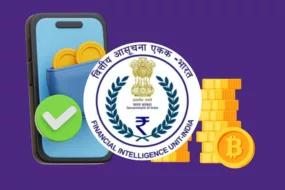
Block Exlporers: Explained
Blockchain or block explorers are essential tools in the cryptocurrency ecosystem, providing transparency and accessibility to blockchain data. This blog aims to explain their functions and uses, helping users understand their importance in the digital currency landscape.
Understanding Blockchain Explorers
Blockchain explorers are web applications that allow users to browse and search blockchain data. They provide transparency and accessibility, making blockchain technology more understandable and usable for a wide audience, including users, developers, and researchers. These explorers play a crucial role in demystifying blockchain technology and ensuring its integrity by displaying information such as transaction details, block data, and address balances.
Historical Context and Evolution
Block explorers have evolved significantly since the inception of Bitcoin in 2009. Initially, blockchain data was accessible only to those with technical expertise, making it difficult for average users to interact with the blockchain. The development of user-friendly explorers has democratized access to blockchain data, enabling a broader audience to participate in the cryptocurrency ecosystem. Early explorers focused primarily on Bitcoin, but as the number of blockchain networks grew, so did the need for specialized explorers for different cryptocurrencies.
How Blockchain Explorers Work
Block explorers retrieve data from blockchain nodes and present it in a user-friendly format. They provide insights into blocks, transactions, and addresses by querying the blockchain network. When a user searches for a transaction ID, block number, or address, the explorer fetches the relevant data and displays it in a readable format, including timestamps, transaction amounts, and sender/receiver addresses.
Key Features
Key features of blockchain explorers include:
- Transaction Tracking: Users can track the status and details of specific transactions.
- Block Details: Information about each block, such as block height, timestamp, and the number of transactions included.
- Address Balance Checks: Users can view the balance and transaction history of specific addresses.
- Historical Data: Having access to past blockchain data for study and investigation.
Popular Blockchain Explorers
Popular blockchain explorers include:

- Etherscan (Ethereum): Etherscan is renowned for putting together comprehensive data on Ethereum transactions and contracts, as well as its tokens.

- Blockchain.com (Bitcoin): This website provides information about Bitcoin transactions, blocks, and addresses, as well as Bitcoin price data.

- BscScan (Binance Smart Chain): Uses an analytics tool to give information on the contracts and transactions on the Binance Smart Chain.

Benefits of Blockchain Explorers
Blockchain explorers are essential tools in the blockchain ecosystem for several key reasons:
- Enhancing Transparency: They offer open access to blockchain data, allowing users to check transactions and monitor fund movements. This transparency builds trust and strengthens the integrity of the blockchain network.
- Facilitating Verification: Users can independently verify transactions with detailed information provided by blockchain explorers. This helps prevent fraud and ensures transaction accuracy.
- Promoting Accountability: Transparent transaction records help establish accountability among network participants, discouraging malicious behavior and encouraging responsible actions.
- Democratizing Access: By making blockchain data accessible to everyone, regardless of technical skill, blockchain explorers promote wider engagement and participation in blockchain networks.
Use Cases
Block explorers have several practical applications, including:
- Verifying Transactions: Ensuring that transactions have been correctly processed.
- Monitoring Network Health: Checking the status and performance of the blockchain network.
- Researching Blockchain Activity: Analyzing trends and patterns in blockchain usage.
- Aiding Forensic Investigations: Investigating suspicious activities and tracing stolen assets.
Technical Specifications
Blockchain explorers operate on various technical layers:
- Backend Servers: These servers interact with blockchain nodes to retrieve real-time data.
- Databases: They store blockchain data to facilitate quick searches and historical analysis.
- Frontend Interfaces: User-friendly interfaces that display data in an organized and accessible manner.
Explorers are designed to handle large volumes of data efficiently, ensuring that users can access up-to-date information without significant delays.
Challenges and Limitations
Despite their benefits, blockchain explorers face several challenges:
- Scalability: As blockchain networks grow, maintaining performance and speed becomes increasingly difficult.
- Data Privacy: Balancing transparency with privacy is a constant challenge, especially for users concerned about their transaction history being public.
- User Education: Many users still lack a comprehensive understanding of how to use blockchain explorers effectively.
Future Prospects
The future of blockchain explorers is bright, with several trends likely to shape their development:
- Integration with Decentralized Finance (DeFi): As DeFi grows, explorers will incorporate more features tailored to DeFi activities.
- Artificial Intelligence (AI): AI-driven analytics will provide deeper insights into blockchain data.
- Improved User Experience: Efforts to make explorers more intuitive and accessible to non-technical users.
Conclusion
Blockchain explorers, which provide unmatched accessibility and openness to blockchain data, are essential components of the Bitcoin ecosystem. By utilizing these tools, users can better understand and interact with blockchain technology, making informed decisions in their crypto endeavors.
Mudrex elevates crypto accessibility with its user-friendly trading and investing platform. Download the Mudrex app now on Google Play or App store to begin your crypto investment journey today!
FAQs
What is a blockchain explorer?
A blockchain explorer is an online tool or platfom that allows users to view and search blockchain data, providing information on transactions, blocks, and addresses.
How does a blockchain explorer work?
It connects to a blockchain node, retrieves data, and presents it in a user-friendly format, allowing users to search for specific transactions, blocks, or addresses.
Why are blockchain explorers important?
They enhance transparency and accountability in the cryptocurrency space by making blockchain data publicly accessible and verifiable.
Can I use a blockchain explorer to verify my transaction?
Yes, you can use a blockchain explorer to track the status and details of your transaction to ensure it has been confirmed and included in the blockchain.





